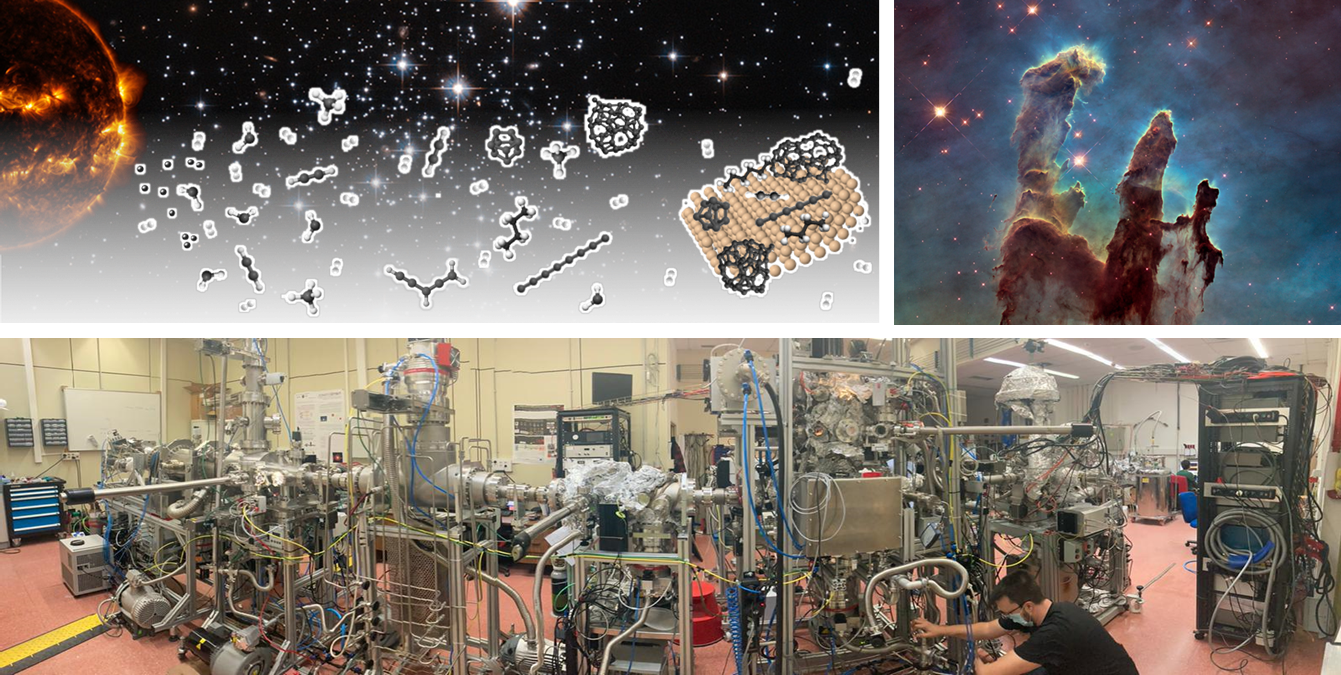Laboratory astrochemistry aims at unveiling plausible chemical mechanisms operating in space through the simulation in the laboratory of the conditions encountered in different regions of the universe. The field encompasses, among others, the formation and evolution of cosmic dust, the energetic processing of interstellar ices as well as the catalytic activity of dust grains, all of which are related to the formation of complex molecules in space and the emergence of life.
At the ESISNA group, we have designed and built a worldwide unique experimental station, the so-called STARDUST machine, to investigate in the laboratory the abovementioned scientific problems. In particular, we are able to mimic the formation of cosmic dust in AGB stars starting from atomic precursors as well as the dust-gas interaction during their way from the formation at the star atmosphere towards the interstellar medium (ISM). Additionally, the dust analogues can be coated with molecular ices and subjected to similar energetic processes as those occurring in the ISM.

Key publications:
- L. Martínez et al. Prevalence of non-aromatic carbonaceous molecules in the inner regions of circumstellar envelopess. Nat. Astron. 4 (2020) 97. Link.
- G. Santoro et al. The chemistry of cosmic dust analogues from C, C2, and C2H2 in C-rich circumstellar envelopes. Astrophys. J. 895 (2020) 97. Link.
- M. Accolla et al. Silicon and Hydrogen Chemistry under Laboratory Conditions Mimicking the Atmosphere of Evolved Stars. Astrophys. J. 906 (2021) 44. Link.

